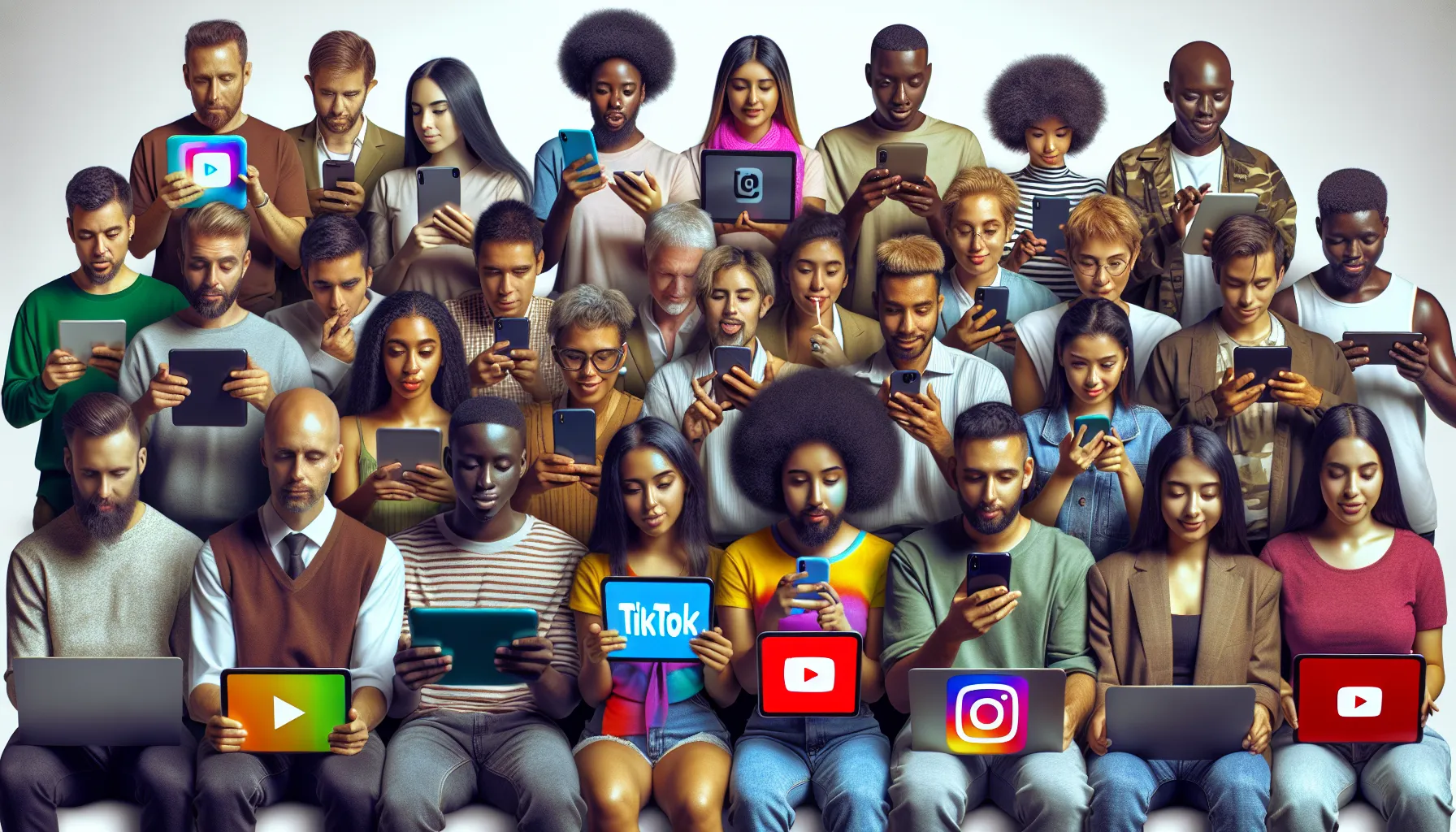Key Takeaways
- Social media platforms offer varied monetization opportunities, with YouTube, TikTok, and Instagram ranking among the top-paying platforms in 2023.
- YouTube leads with ad revenue sharing, offering creators 55% of ad revenue, alongside options like memberships, Super Chats, and sponsorship deals.
- TikTok pays creators via its Creator Fund, though earnings per view are modest, while brand partnerships and merchandise sales significantly boost income.
- Instagram excels in influencer marketing, with lucrative sponsored post deals, product tagging, and additional tools like Reels Play Bonuses for monetizing short-form videos.
- Platforms like Facebook and Twitter provide unique revenue models, including in-stream ads, Super Follows, and paid events, catering to different types of creators.
- Creators can maximize earnings by selecting platforms aligned with their niche, producing high-quality content, and diversifying income streams through ads, sponsorships, and products.
Social media’s not just a place to share memes or catch up with friends anymore—it’s become a serious money-making machine. From influencers cashing in on brand deals to creators earning through ad revenue, the opportunities are endless. But with so many platforms out there, it’s natural to wonder which one actually pays the most.
I’ve always been curious about how these platforms stack up when it comes to rewarding creators. Whether you’re a TikTok dancer, a YouTube vlogger, or an Instagram fashionista, the payout can vary wildly depending on where you focus your energy. Let’s dive into what makes some platforms more lucrative than others and uncover where creators are really raking in the big bucks.
Overview Of Social Media Monetization
Social media monetization allows creators to turn their content into revenue. Platforms vary in how they support creators financially, with some offering more lucrative opportunities than others.
Why Creators Look For High-Paying Platforms
Creators prioritize platforms that offer higher payouts to sustain their careers. For example, platforms like YouTube and TikTok provide ad revenue and monetization tools, which can result in consistent earnings for creators with large audiences. Financial security and creative control often motivate creators to focus on platforms with higher financial rewards.
Key Factors Influencing Earnings On Social Media
Multiple factors influence how much creators earn on social media. Audience size plays a significant role; creators with millions of followers (e.g., on Instagram or TikTok) often secure higher-paying brand deals. Engagement rate affects earnings because brands value creators whose followers actively interact with their content. Platform-specific payouts, such as YouTube’s AdSense or TikTok’s Creator Fund, directly influence income by aligning payments with views or activity. Content niche also impacts earnings, with topics like technology or finance often attracting higher-paying ads due to higher demand from advertisers.
Top Paying Social Media Platforms In 2023

Social media platforms offer different earning potentials, with some consistently outshining others in payouts. Here’s a breakdown of the highest-paying platforms creators rely on in 2023.
YouTube: The Power Of Ad Revenue And Partnerships
YouTube remains one of the top-paying platforms due to its lucrative ad revenue model. Creators earn through AdSense, receiving 55% of ad revenue generated from their content. Channels with high engagement and millions of subscribers, such as MrBeast and PewDiePie, can earn tens of millions annually. Besides ads, YouTube supports income through channel memberships, Super Chats, and sponsorship deals, where brands pay creators to promote products in videos tailored to their audience.
TikTok: Short-Form Video Earnings Potential
TikTok’s Creator Fund provides direct payments to account holders based on video views and engagement, but the payout per 1,000 views often ranges between $0.02 and $0.04. Top creators supplement their income through brand partnerships, often earning thousands per sponsored post. Merchandise integration and live gifts also contribute to TikTok’s overall earning potential, especially for influencers in niches like beauty or lifestyle.
Instagram: Monetization Through Influencer Marketing
Instagram leads in influencer marketing, offering substantial earning opportunities through brand collaborations. Sponsored posts pay anywhere from a few hundred dollars for micro-influencers to over $1 million for top-tier accounts like Cristiano Ronaldo. The platform also supports monetization tools like Instagram Live badges, affiliate marketing, and product tagging, enabling creators to maximize their revenue streams. Reels Play Bonuses further incentivize short-form video content production.
Facebook: Opportunities For Long-Form Content Creators
Facebook provides robust monetization for long and engaging content through in-stream ads. Ad Breaks reward creators who produce videos lasting three minutes or longer, offering payouts based on ad impressions. Eligible pages can also use fan subscriptions and launch paid online events. With billions of monthly users, Facebook favors creators targeting broad audiences and community-focused niches.
Twitter: Subscription Services And Sponsored Posts
Twitter monetization has grown, with features like Super Follows and paid Spaces allowing creators to charge for exclusive content. Additionally, brands often collaborate with active accounts for sponsored tweets and campaigns, paying hundreds or thousands per post, depending on follower count and engagement rates. Tech and finance-focused accounts typically attract the highest-paying sponsors.
Comparing Payment Models Across Platforms

Social media platforms use different payment models to reward creators. These models impact how much income creators can generate, depending on their content and audience.
Ad Revenue Sharing
YouTube leads in ad revenue sharing, giving creators 55% of ad revenue through AdSense. Facebook also supports ad revenue sharing, particularly for long-form content through in-stream ads. Platforms like TikTok and Instagram rely less on ad revenue, focusing on other monetization methods.
Direct Creator Funds
Various platforms provide creator funds to pay users directly for content performance. TikTok’s Creator Fund rewards video views, though earnings are often modest compared to ad revenue models. YouTube Shorts Fund offers one-time payouts for creators of short-form content, while Snapchat’s Spotlight surfaces high-performing videos with significant payout opportunities.
Subscription-Based Earnings
Several platforms offer creators subscription tools for exclusive content. Twitter supports monetization through Super Follows, allowing exclusive access to tweets or benefits for a recurring fee. Facebook’s fan subscription feature works similarly. Platforms like Patreon complement social media earnings by focusing entirely on subscription-based offerings.
Affiliate Marketing And Brand Deals
Many creators generate income by partnering with brands for promotions or using affiliate marketing links. Instagram leads in influencer marketing, with high-earning creators often negotiating directly with brands. TikTok creators work with brands for sponsored challenges or product placement. YouTube and Twitter also support affiliate marketing but are less concentrated on influencer-brand interactions than Instagram.
How To Maximize Your Earnings On Any Platform

Monetizing social media effectively requires a combination of strategy, creativity, and understanding of platform-specific opportunities. Here’s how I approach it to ensure maximum earnings.
Building Engaging And Valuable Content
Consistently creating content that resonates with my audience attracts higher engagement and monetization opportunities. High-quality videos or posts relevant to my followers’ interests keep them engaged. I monitor my content’s performance using analytics tools to identify what works best. For example, educational videos in niches like finance or tutorials in the tech industry often drive more shares and clicks, which increases income potential.
Choosing The Right Platform For Your Niche
I focus on platforms that align with my niche and audience preferences. For instance, if my content is visual, I prioritize Instagram or TikTok, while long-form or in-depth topics perform better on YouTube. Comparing platform monetization models also helps me decide. YouTube’s ad revenue sharing is ideal for tech reviewers, whereas Instagram’s influencer marketing suits lifestyle creators.
Leveraging Multiple Revenue Streams
Diversifying income sources ensures I’m less dependent on one monetization method. In addition to ad revenue, I use tools like Patreon for subscriptions, partner with brands on TikTok and Instagram, and sell merchandise. On platforms like Facebook and YouTube, I boost earnings through in-stream ads and sponsor collaborations. Combining these strategies increases my financial stability and earning potential.
Conclusion
Social media has transformed into a powerful income source for creators, offering endless opportunities to turn passion into profit. Choosing the right platform depends on your niche, audience, and goals, but success ultimately comes down to creating content that connects with people.
By exploring different revenue streams and staying adaptable, creators can unlock the full earning potential of their chosen platforms. Whether it’s ad revenue, brand deals, or subscriptions, there’s no one-size-fits-all approach. Focus on what works best for you and keep building toward your vision.
Frequently Asked Questions
What are the main ways creators monetize social media platforms?
Creators generate income through ad revenue, brand partnerships, merchandise sales, affiliate marketing, and subscription-based models. Platforms like YouTube and TikTok also offer creator funds that reward content performance, while Twitter and Facebook provide tools for paid exclusive content.
Which social media platform pays creators the most?
YouTube leads in payouts with its AdSense program, giving creators 55% of ad revenue. Other platforms like TikTok and Instagram rely heavily on alternative income sources, such as brand deals and direct funding, but often offer lower payouts compared to YouTube.
How can creators maximize their social media earnings?
Creators can maximize earnings by creating highly engaging content, choosing platforms aligned with their niche, and diversifying income streams. Strategies like leveraging ad revenue, brand deals, merchandise sales, and subscription platforms like Patreon can significantly enhance financial stability.
Are niche-specific creators more likely to earn higher income?
Yes, creators specializing in high-paying niches like technology, finance, or health often attract better-paying brand deals and ads due to their industry’s profitability. Audience engagement within those niches also plays a key role in boosting income potential.
How does TikTok’s Creator Fund differ from YouTube’s AdSense program?
TikTok’s Creator Fund pays creators based on video views and overall engagement but typically offers modest earnings. In contrast, YouTube’s AdSense program gives creators 55% of ad revenue based on watch time, making YouTube a more lucrative option for high-performing creators.
Is Instagram a good platform for monetizing content?
Absolutely! Instagram excels in influencer marketing, allowing creators to earn through sponsored posts, brand collaborations, and affiliate marketing. Earnings vary depending on follower count and engagement but can be substantial for creators with a strong presence.
What factors influence creator earnings on social media?
Key factors include audience size, engagement rates, niche profitability, platform payout models, and content type. Platforms rewarding long-form, performance-driven content, such as YouTube, generally provide more income opportunities than short-form-focused platforms.
Can creators earn money from subscriptions on social media?
Yes, platforms like Twitter and Facebook have introduced subscription-based tools enabling creators to charge for exclusive content access. Many creators also use external platforms like Patreon to monetize loyal audiences through subscription plans.
Is diversifying income sources important for creators?
Yes, relying on multiple revenue streams like ad earnings, merchandise sales, brand partnerships, and subscriptions ensures financial stability. Diversifying reduces risks associated with changes in platform policies or income fluctuations.
Which platform is better for beginner creators aiming to earn money?
YouTube and TikTok are great starting points for beginners due to built-in monetization tools and large audiences. However, creators should select platforms matching their content style and niche to maximize growth and monetization potential.

